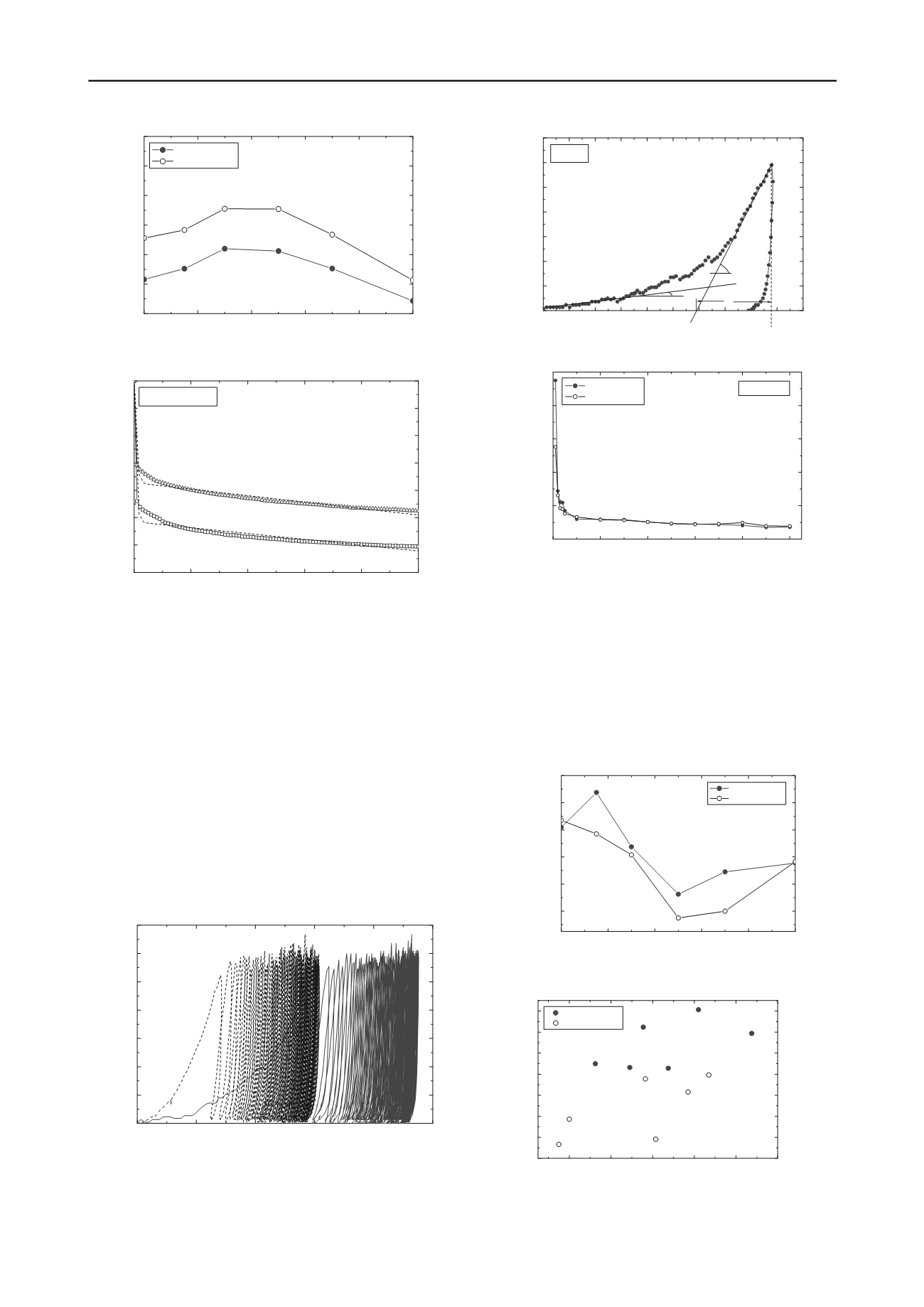
1307
Technical Committee 202 /
Comité technique 202
0.0 0.2 0.4 0.6 0.8 1.0 1.2 1.4 1.6 1.8
0
20
40
60
80
100
120
140
2.0
k
2
k
2
u
2
1
st
cycle
Applied pressure,
p
(kN/m
2
)
Settlement of sleeper,
S
(mm)
0
20
40
60
80
0.0
0.1
0.2
0.3
0.4
0.5
100
Before tamping
After tamping
M sand
u
2
(mm)
No of loading cycles,
N
30%
100
0
20
40
60
80
3.0
2.5
2.0
1.5
1.0
0.5
0.0
Settlement after 100 loading cycles,
S
100
(mm)
Amount of sand (%)
Before Tamping
After Tamping
Figure 7. The settlement at 100 loading cycle vs. % sand
Figure 8. Relationships between
S
and
N
for fresh ballast and 30% sand
cases (before tie tamping application)
3.2 Effects of roadbed stiffness on settlement characteristics
Figure 9 shows typical relationships between sleeper settlement
and applied stress,
p
(30% sand case is shown here). It can
clearly be seen that settlement reduces in the 2
nd
phase (i.e.,
after tie tamping application), due to densification of the
specimen in the 1
st
phase (i.e., before tie tamping application
with 100 loading cycles).
In this research, the loading curves were fitted by bilinear lines,
and the slopes of the two lines were estimated as
k
1
and
k
2
as
shown in Figure 10. Displacement
u
2
was estimated by dividing
the applied stress by
k
2
as shown in Figure 10. The parameter
u
2
decreases and tends to show a constant value with
N
as shown
in Figure 11. Therefore, these constant values were used in the
following discussion.
Figure 9. Applied stress vs. settlement for 30% sand case
Figure 10. Calculation of
u
2
(Gravel specimen)
0
20
40
60
80
2.8
2.4
2.0
1.6
1.2
0.8
0.4
0.0
100
S
30%
= 1.49(1 - e
-1.44
N
) + 0.0047
N
S
0%
= 2.06(1 - e
-1.67
N
) + 0.0043
N
Before Tamping
30% sand
Fresh ballast
Settlement,
S
(mm)
No of loading cycles,
N
Figure 11. Relationships of
u
2
and
N
(30% sand case)
The relationships between
u
2
with %sand,
c
,
and
before and
after tie tamping application are shown in Figures 12-15
respectively. Figure 12 shows that 50% sand specimen is the
densest specimen (i.e., showing the smallest
u
2
). Figure 13
shows that
c
increases with
u
2
(though not very clearly),
indicating that loose specimen will result in higher initial
settlement, in both before and after tie tamping application.
Figure 14 shows that initial settlement period alter by tie
tamping application with a wider gap between the highest and
smallest
compared to those of before tie tamping application.
0
20
40
60
80
0.036
0.040
0.044
0.048
0.052
0.056
100
u
2
(mm)
Amount of sand (%)
Before Tamping
After Tamping
0.0
0.4
0.8
1.2
1.6
2.0
0
20
40
60
80
100
120
140
After tamping
Before tamping
Applied stress,
p
(kPa)
Settlement,
S
(mm)
Figure 12. Relationships of u
2
and% sand
0.036
0.040
0.044
0.048
0.052
0.056
0.6
0.8
1.0
1.2
1.4
1.6
1.8
2.0
c
u
2
(mm)
Before Tamping
After Tamping
Figure 13. Relationships of
u
2
and
c


